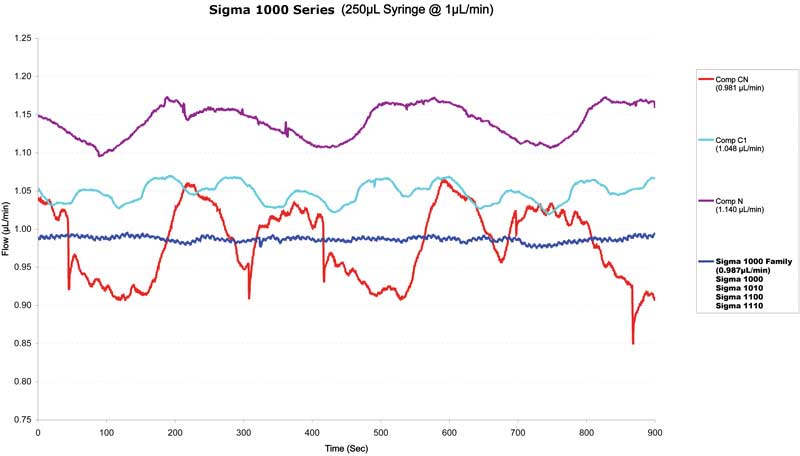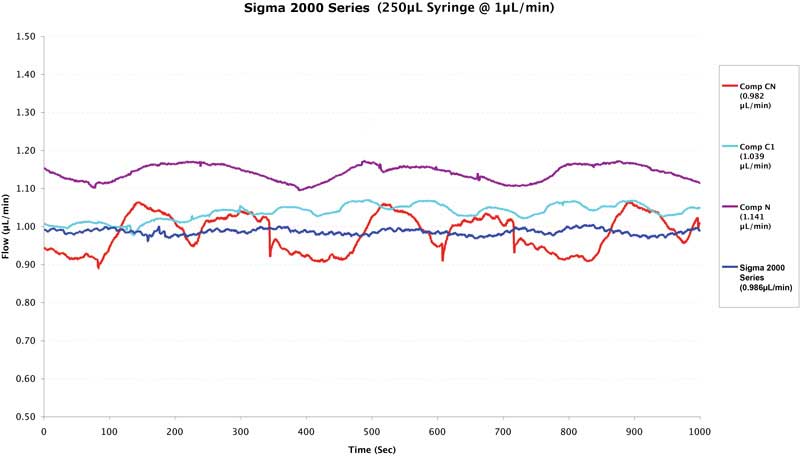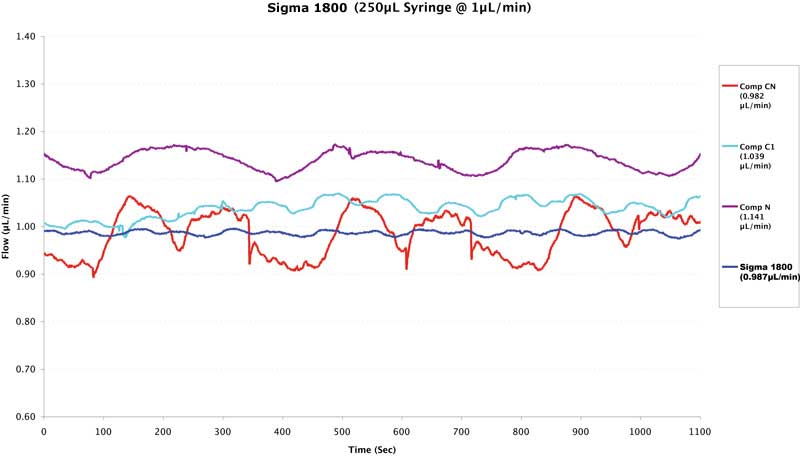
BE THE FIRST TO KNOW
Enter your email below to subscribe to the QLA newsletter to receive timely updates from your favorites products.
As with many applications, reproducibility is key. If you are infusing a pre-determined amount of liquid at a set infusion rate, it is not much help if the flow rate varies from experiment to experiment. The final delivered amount may be correct but the way it is delivered can vary a huge amount. This is particularly critical with applications such as electrospinning, Mass Spec calibration and biological experiments where small flow rates are essential.
The way that pumps are built, and quality of the components, motors, bushings and all parts of the moving bed of the pump, play a critical part in that reproducibility.
You can see from the graphs below, just how much variation there is between our pumps and three other brands of pump, and why Cronus pumps stand out from the rest.

The Sigma 1000 Series (shown in blue) offers really outstanding flow control and reproducibility.

The Sigma 2000 Series (shown in blue) allows interchangeable racks and yet still offers complete flow stability across all the syringes.

This graph shows the low flow rate Sigma 1800 performance. This pump is designed for infusion and withdrawal and for operation at extremely low flow rates where stability is critical.
All Cronus pumps, both Sigma Series and Delta Series, offer an exceptional performance and reproducibility that other pumps simply cannot match. This build quality also translates into a low maintenance and long life that makes your investment the most cost-effective long-term solution possible.